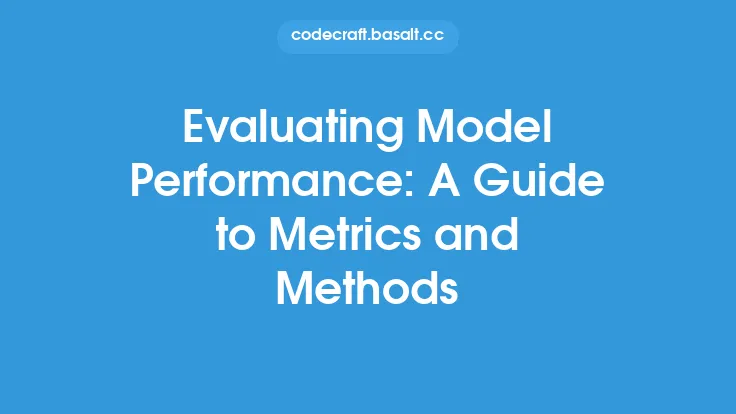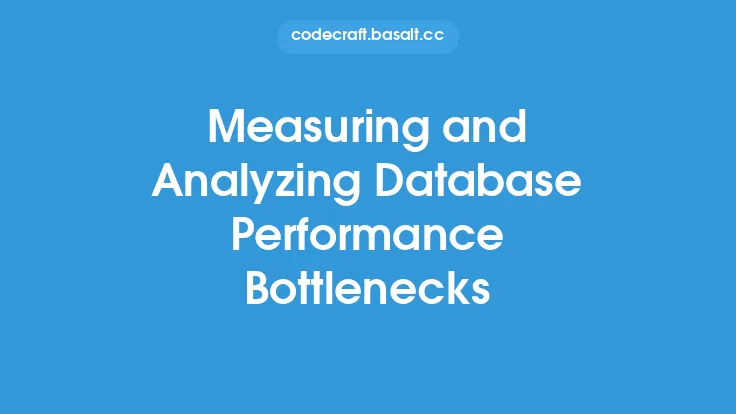Database performance benchmarking and testing are crucial steps in ensuring that a database system can handle the required workload and provide optimal performance. Benchmarking involves running a set of standardized tests to measure the performance of a database system, while testing involves evaluating the database system's behavior under various conditions. In this article, we will delve into the world of database performance benchmarking and testing, exploring the different types of benchmarks, testing methodologies, and tools used to evaluate database performance.
Introduction to Database Benchmarking
Database benchmarking is the process of measuring the performance of a database system using a set of standardized tests. These tests are designed to simulate real-world workloads and measure the database system's ability to handle various tasks, such as query execution, data insertion, and transaction processing. Benchmarking helps database administrators and developers to evaluate the performance of different database systems, identify bottlenecks, and optimize database configuration for better performance. There are several types of database benchmarks, including:
- Transactional benchmarks: These benchmarks simulate transactional workloads, such as online transaction processing (OLTP) and measure the database system's ability to handle transactions per second.
- Query benchmarks: These benchmarks simulate query workloads, such as decision support systems (DSS) and measure the database system's ability to execute queries per second.
- Data loading benchmarks: These benchmarks simulate data loading workloads, such as data warehousing and measure the database system's ability to load data per second.
Types of Database Testing
Database testing involves evaluating the database system's behavior under various conditions, such as different workloads, hardware configurations, and software versions. There are several types of database testing, including:
- Functional testing: This type of testing involves evaluating the database system's functionality, such as data retrieval, data insertion, and data updating.
- Performance testing: This type of testing involves evaluating the database system's performance, such as query execution time, transaction processing time, and data loading time.
- Stress testing: This type of testing involves evaluating the database system's behavior under extreme conditions, such as high workload, low memory, and high CPU usage.
- Scalability testing: This type of testing involves evaluating the database system's ability to handle increasing workloads, such as increasing the number of users, transactions, and data volume.
Database Benchmarking Tools
There are several database benchmarking tools available, both open-source and commercial. Some popular database benchmarking tools include:
- TPC-C: This is a transactional benchmarking tool that simulates OLTP workloads and measures the database system's ability to handle transactions per second.
- TPC-H: This is a query benchmarking tool that simulates DSS workloads and measures the database system's ability to execute queries per second.
- SysBench: This is an open-source benchmarking tool that simulates OLTP workloads and measures the database system's ability to handle transactions per second.
- HammerDB: This is an open-source benchmarking tool that simulates TPC-C and TPC-H workloads and measures the database system's ability to handle transactions and queries per second.
Database Testing Methodologies
There are several database testing methodologies available, including:
- Black box testing: This type of testing involves evaluating the database system's behavior without knowing the internal implementation details.
- White box testing: This type of testing involves evaluating the database system's behavior with knowledge of the internal implementation details.
- Gray box testing: This type of testing involves evaluating the database system's behavior with some knowledge of the internal implementation details.
- Exploratory testing: This type of testing involves evaluating the database system's behavior without preconceived notions of how it should behave.
Best Practices for Database Benchmarking and Testing
To get accurate and reliable results from database benchmarking and testing, it is essential to follow best practices, such as:
- Use standardized benchmarks and testing methodologies to ensure comparability of results.
- Use realistic workloads and data sets to simulate real-world conditions.
- Use multiple iterations and repetitions to ensure consistency of results.
- Use automated testing tools to reduce manual effort and increase efficiency.
- Use monitoring and logging tools to collect detailed performance metrics and identify bottlenecks.
Challenges and Limitations of Database Benchmarking and Testing
Database benchmarking and testing are not without challenges and limitations. Some of the common challenges and limitations include:
- Difficulty in simulating real-world workloads and conditions.
- Limited scalability and flexibility of benchmarking and testing tools.
- High cost and complexity of benchmarking and testing infrastructure.
- Difficulty in interpreting and analyzing benchmarking and testing results.
- Limited availability of skilled personnel and expertise in database benchmarking and testing.
Conclusion
Database performance benchmarking and testing are essential steps in ensuring that a database system can handle the required workload and provide optimal performance. By using standardized benchmarks and testing methodologies, following best practices, and using automated testing tools, database administrators and developers can evaluate the performance of different database systems, identify bottlenecks, and optimize database configuration for better performance. However, database benchmarking and testing are not without challenges and limitations, and it is essential to be aware of these limitations to get accurate and reliable results.





